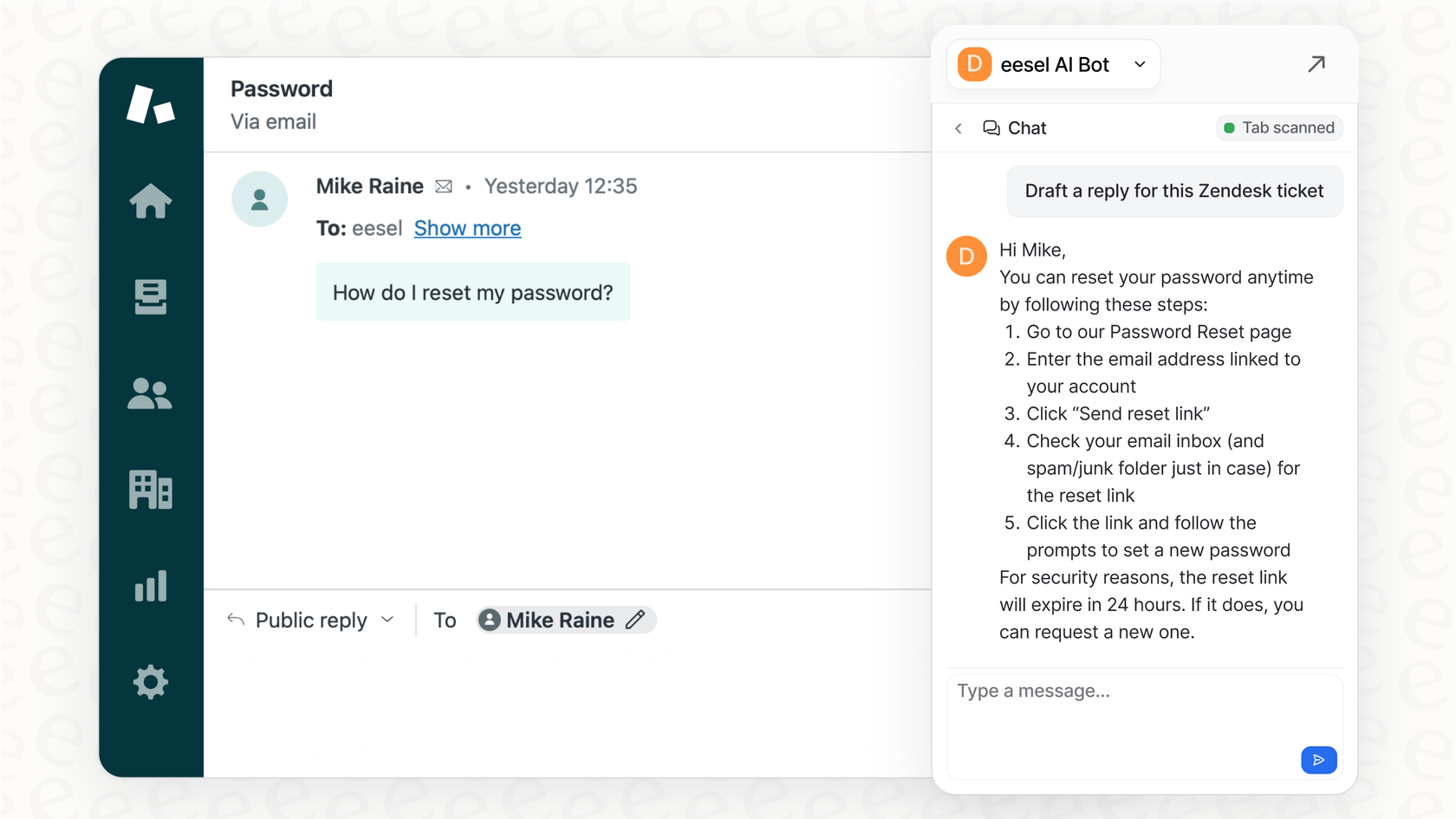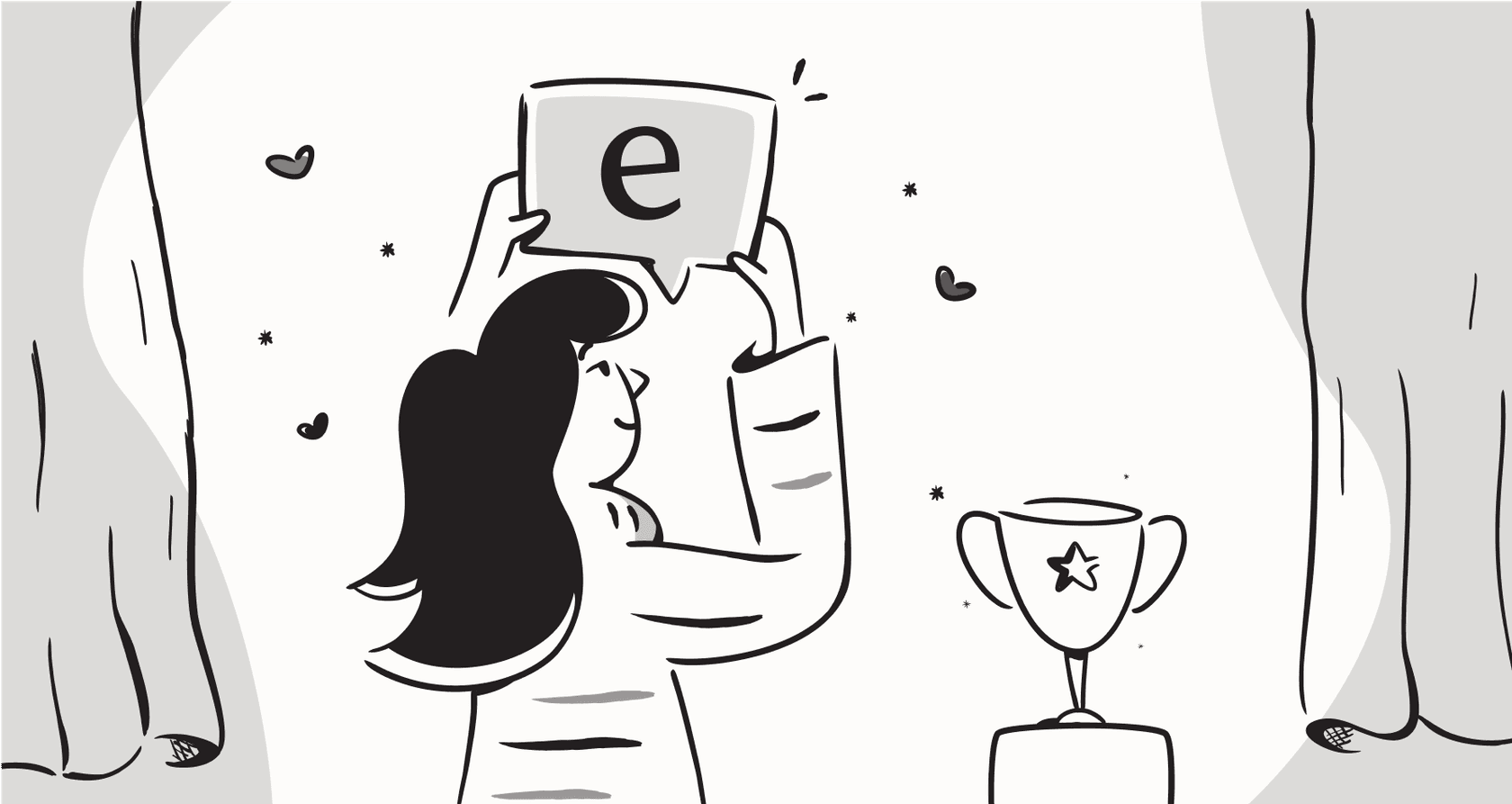Zendesk automations explained: Features, limitations, and alternatives

Kenneth Pangan

Katelin Teen
Last edited October 8, 2025
Expert Verified

Let's be honest, Zendesk is supposed to make life easier, right? But if you've ever found yourself lost in a maze of triggers and automations, you know it can sometimes feel like the opposite. You're paying for a powerful system, but setting up a simple workflow can feel like you need an engineering degree. It's a common headache for teams who feel like they’re not getting the most out of their helpdesk.
This guide is here to clear things up. We'll walk through how Zendesk automations really work, explaining the difference between the two main types: triggers and automations. We’ll look at what they’re good for, where they fall short, and introduce a smarter, more flexible way to level up your support without having to switch platforms.
What are Zendesk automations?
When people talk about automation in Zendesk, they're usually talking about two different tools: Triggers and Automations. They both get tasks done automatically, but they’re kicked off in completely different ways. Getting this difference is the first step to really taking control of your support workflows.
Zendesk triggers
Triggers are all about a real-time reaction. They fire the instant a ticket is created or updated, as long as the conditions you’ve set are met. Think of them as simple "if this happens, then do that" instructions that run immediately. They're perfect for actions that can't wait.
- Common uses: Instantly sending a "We got your email!" confirmation, assigning a new ticket about billing to the finance team, or adding a tag if an email contains the word "Urgent."
Time-based rules
Automations, on the other hand, play the long game. They're time-based. They don't run right away. Instead, Zendesk scans all of your open tickets once an hour to see if any of them fit an automation’s criteria. This makes them ideal for follow-ups and clean-up tasks that depend on how much time has gone by.
- Common uses: Nudging an agent if a ticket has been sitting for 48 hours, raising the priority of a ticket that's about to miss its SLA deadline, or automatically closing a solved ticket after four days of silence.
 A diagram illustrating the workflow capabilities of Zendesk automations.
A diagram illustrating the workflow capabilities of Zendesk automations.The key difference
The simplest way to choose between them is to ask yourself one question: "Does this need to happen right now, or after a while?"
| Feature | Trigger | Automation |
|---|---|---|
| When it runs | Instantly, when a ticket changes | Hourly, on tickets that are waiting |
| Core purpose | Immediate actions and notifications | Time-based follow-ups and housekeeping |
| Example | Notify the VIP team when a key customer sends a ticket. | Close a solved ticket after 4 days of inactivity. |
A deep dive: Zendesk automation features and limitations
Okay, so now you know the difference. Let's get into what you can actually build with these tools and, just as important, where you’re likely to get stuck. While they’re great for basic tasks, their rigidity is often what pushes teams to look for something a bit smarter.
What you can do: Examples of Zendesk automations
When set up correctly, Zendesk’s native tools can handle plenty of important jobs that keep your support queue from turning into chaos. Here are a few things you can pull off:
-
Smarter Ticket Routing: Use a trigger to automatically send tickets with words like "billing" or "refund" straight to the finance department.
-
SLA Management: Set up an automation to ping a manager when a high-priority ticket is getting dangerously close to its reply-time deadline.
-
Customer Feedback: Create an automation that sends out a satisfaction survey 24 hours after a ticket is marked as solved.
-
Automatic Clean-up: Use an automation to close out any tickets that have been solved for more than four days, keeping your views tidy.
The catch with Zendesk automations
The problem isn't what these tools can do. It's the headache of getting them to do it reliably. As anyone who has managed a Zendesk account knows, creating workflows beyond simple notifications can feel an awful lot like coding. You find yourself juggling dozens of conditions and actions that can clash with each other, leading to some very weird and unexpected results.
Getting it right often means having a dedicated Zendesk admin on staff or bringing in pricey consultants, all to use features you're already paying for. This is usually the point where the dream of an easy, out-of-the-box solution starts to crack.
Key limitations of Zendesk automations
The biggest issue with Zendesk’s triggers and automations is that they aren't very smart. They're rigid systems that follow rules to the letter. They can’t understand context, learn from experience, or operate without you worrying about what might go wrong.
-
They're all rules, no intuition: Triggers and automations can only act on the data fields of a ticket (like its status, priority, or tags). They have no idea what the customer’s message actually means. If a customer is clearly frustrated but doesn't use the exact keyword you're looking for, a rule-based system won't know to escalate the ticket.
-
No safe way to test them: Ever pushed a new trigger live and held your breath, hoping it doesn't break everything? One of the biggest risks is deploying a faulty rule. A tiny mistake in your conditions could wrongly update or close thousands of tickets, leaving your team with a massive mess to clean up. Lower-tier plans don't have a built-in "sandbox" to test your changes safely.
-
They're stuck in a silo: Zendesk’s tools only know what’s inside Zendesk. They can't check your company’s internal wiki on Confluence or pull an answer from a Google Doc to give customers a better response.
-
AI features cost a fortune: Zendesk does offer AI features to help with these problems, but they're usually locked behind their most expensive plans or sold as separate, costly add-ons. Even then, you’ll find plenty of teams who say these tools don't quite live up to the hype.
This is where a tool like eesel AI really makes a difference. Instead of relying on fragile rules, it uses AI to understand the conversation. Plus, it has a powerful simulation mode that lets you see how it would perform on thousands of your past tickets before it ever touches a live one.
Zendesk pricing: The cost of advanced automations
To get your hands on Zendesk's more advanced automation features, you’ll have to spring for one of their Suite plans. The catch is that many of the most important tools for managing complex workflows are only available in the top tiers, and the costs can climb fast.
Here's a quick look at the annual pricing for Zendesk Suite plans:
| Plan | Price (per agent/month, billed annually) | Key Automation-Related Features |
|---|---|---|
| Suite Team | $55 | Ticketing system, basic workflows (triggers & automations), 1 help center. |
| Suite Professional | $115 | Everything in Team + SLA management, CSAT surveys, up to 5 help centers. |
| Suite Enterprise | $169 | Everything in Professional + Sandbox for testing, custom roles, audit logs. |
Notice that the Sandbox environment, the one feature that lets you test automations without risk, is only available on the Enterprise plan. This means most teams are stuck building and launching their workflows in a live environment, crossing their fingers that nothing breaks.
This pricing structure makes it hard for growing teams to plan their budget. In contrast, a platform like eesel AI has transparent, predictable pricing that includes all of its main products, like AI Agent and AI Copilot, without charging you extra per ticket it solves.
eesel AI: A modern alternative to Zendesk automations
Instead of fighting with rigid rules and complicated setups, what if you could just add a layer of intelligence to the helpdesk you already use? eesel AI integrates smoothly with Zendesk to automate support with an AI that actually understands your business.
Go beyond rules with AI
Unlike Zendesk's native tools, eesel AI learns from your past tickets, macros, and help center articles. It understands what your customers are asking for and knows your brand voice, so it can draft accurate, personalized replies and solve issues on its own, instead of just changing a ticket’s status.
 A screenshot showing the eesel AI Copilot drafting a reply for a password reset ticket within the Zendesk interface.
A screenshot showing the eesel AI Copilot drafting a reply for a password reset ticket within the Zendesk interface.Unify all your company knowledge
Your team’s real knowledge probably lives everywhere: internal guides in Confluence, project plans in Google Docs, or company policies in Notion. eesel AI connects to all of these sources, giving it access to the most current information, which leads to much more complete and accurate answers for your customers.
Total control and risk-free deployment
This is a big one. eesel AI puts you in the driver's seat. Its industry-leading simulation engine shows you exactly how the AI would have handled thousands of your past tickets, so you get a precise forecast of its performance before you even turn it on. You can then choose to automate selectively, maybe starting with just one type of question, and roll it out more widely as you get comfortable. It completely removes the guesswork and risk of traditional automations.
Get set up in minutes
Forget about long onboarding calls and paying for professional services. eesel AI is built to be self-serve, so you can connect your helpdesk and set up your AI agent in a few minutes. You can go from signing up to seeing real results without ever having to talk to a salesperson, which is a breath of fresh air compared to most enterprise tools.
Moving to intelligent workflows
Zendesk's triggers and automations have their place. They’re fine for simple, repetitive tasks. But their rigid, rule-based design creates a lot of complexity, risk, and cost for teams that want to do more.
Modern AI platforms offer a much smarter way forward. By understanding context, connecting to all your company knowledge, and letting you deploy safely and gradually, they provide the intelligence and flexibility that old-school rule systems just don't have.
Instead of trying to force Zendesk’s rules to fit your complex needs, think about adding a layer of intelligence that works with the tools you already have. With eesel AI, you can get more out of your Zendesk investment, automate more effectively, and give your agents the freedom to focus on the conversations that truly need a human touch.
Frequently asked questions
Zendesk automations generally refer to both Triggers (instant reactions) and Automations (time-based rules). This guide explores their specific features, practical limitations, and smarter alternatives for support teams to enhance their operations.
Triggers run instantly when a ticket is created or updated, perfect for immediate actions like sending confirmations or routing. Automations are time-based, checking tickets hourly for criteria like inactivity, ideal for follow-ups and housekeeping tasks.
They can be used for smarter ticket routing based on keywords, SLA management by alerting agents to deadlines, sending automated customer satisfaction surveys, and automatically closing old, solved tickets to keep your views tidy.
Key limitations include their rigidity (no understanding of context), difficulty in safely testing new rules without an expensive enterprise plan, and being confined to only Zendesk's internal data. They often lead to complex, code-like setups.
The blog highlights that a sandbox environment for safe testing is only available on Zendesk's expensive Suite Enterprise plan. Alternatives like eesel AI offer powerful simulation modes to test performance risk-free on thousands of past tickets before live deployment.
Yes, eesel AI is presented as a modern alternative that integrates smoothly with Zendesk. It uses AI to understand conversations, connects to all company knowledge sources, and allows for risk-free, selective deployment through its simulation engine.
AI understands context, learns from past interactions, and unifies knowledge from various sources, unlike rigid rule-based systems. It offers a powerful simulation mode for safe deployment and can be set up in minutes without complex coding, providing greater intelligence and flexibility.






